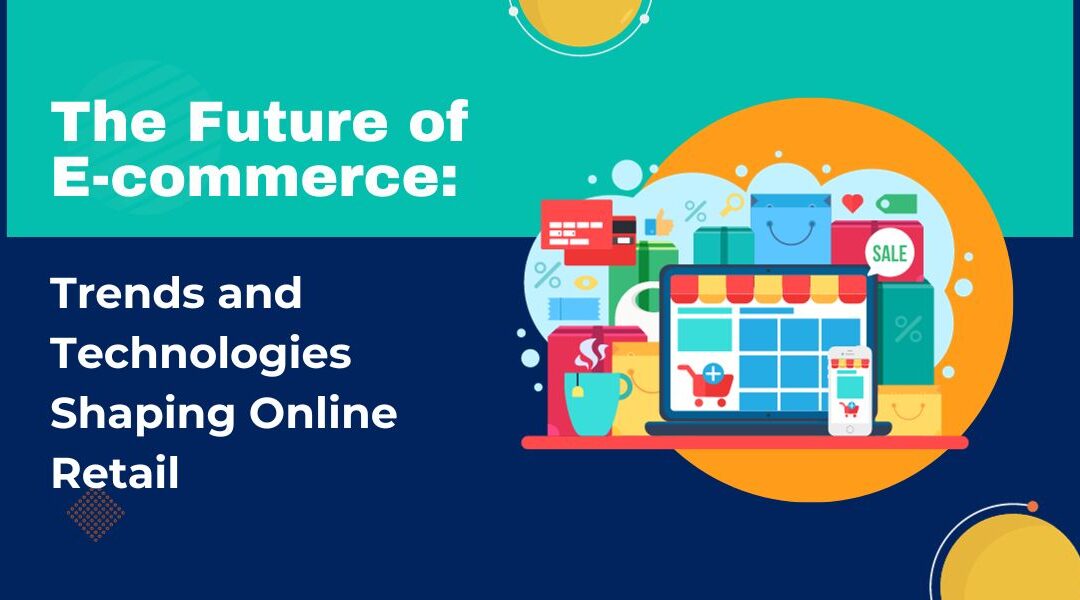Businesses must stay up with the most recent trends and technologies if they want to succeed in the rapidly evolving world of e-commerce. We’ll delve into the fascinating world of e-commerce in this blog and examine the trends that are transforming the sector. We’ll also highlight how software programs, such as chatbots and tailored recommendations, might improve the e-commerce experience. Finally, we’ll offer insightful advice on how to maintain competitiveness in this constantly changing environment.
E-commerce Trends: What Lies Ahead
The e-commerce landscape is undergoing a profound transformation, driven by changing consumer behaviors and technological advancements. Here are some key trends to watch:
- mobile commerce (M-commerce): Mobile shopping is now a major force because to the rise of smartphones. Your e-commerce website needs to be mobile-optimized; it is no longer a choice.
- Multichannel retail: The seamless integration of online and offline channels is what customers need. Retailers are combining their offline and online storefronts to offer a seamless buying experience.
- Ethics and Sustainability in Retail: The trend of conscious consumption is growing. Customers are looking for environmentally friendly goods and businesses with strong ethical principles.
- Artificial Intelligence: Highly tailored purchasing experiences are made possible by artificial intelligence and machine learning. Product searches, chatbots, and recommendations are all getting smarter and more individualized.
- Voice Commerce: The way consumers shop is changing as a result of voice-activated technology like Amazon’s Alexa. You can get a competitive advantage by including voice commerce features into your e-commerce platform.
The Role of Software Solutions in E-commerce
The development of software solutions is crucial to the future of e-commerce. Here’s how they improve the convenience of online shopping:
- Chatbots: AI-powered chatbots offer immediate customer service, respond to inquiries, and direct customers through the buying process. They are accessible around-the-clock, enhancing customer service and increasing revenue.
- Personalized Recommendations: Algorithms examine consumer behavior and preferences to make product recommendations that are specific to each customer. This improves the user experience while simultaneously boosting sales.
- Inventory Management Systems: Effective inventory management guarantees that goods are in stock and prepared for shipping, reducing consumer annoyance brought on by out-of-stock items.
- Payment Alternatives: Payment gateways that are safe and practical are necessary for a smooth checkout process. Software solutions provide secure and efficient transactions.
Staying Competitive in the Evolving World of Online Retail
Businesses must change to meet shifting consumer expectations and technical advancements if they want to succeed in the competitive e-commerce environment. Here are some pointers for staying on top:
- Adopt mobile optimization: Make sure your website is responsive to mobile devices to get into the expanding M-commerce sector.
- Invest in artificial intelligence (AI) and data analytics: Use AI to tailor the buying experience and data analytics to make wise choices.
- Focus on Sustainability: To appeal to environmentally sensitive customers, think about eco-friendly packaging, sustainable sourcing, and ethical business methods.
- Stay Agile: Be prepared to quickly adjust to emerging technologies and consumer trends.
- Prioritize user experience (UX) and user interface (UI) design to provide a simple and satisfying purchasing experience.
In conclusion, interesting trends and technology that are transforming the sector are present in the future of e-commerce. Businesses may maintain their competitiveness and prosper in this quickly changing environment by embracing these trends and utilizing digital solutions to improve the buying experience. To ensure the success of your online retail business, stay informed, be flexible, and maintain a finger on the e-commerce pulse.





